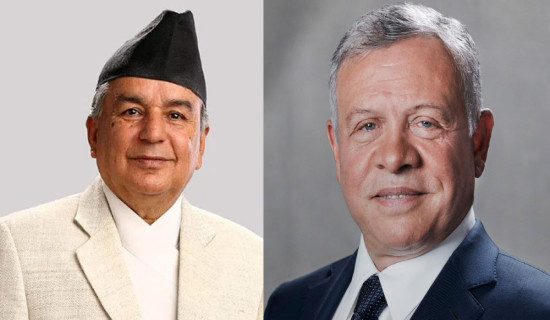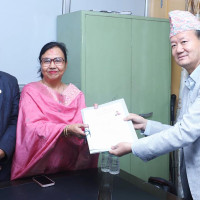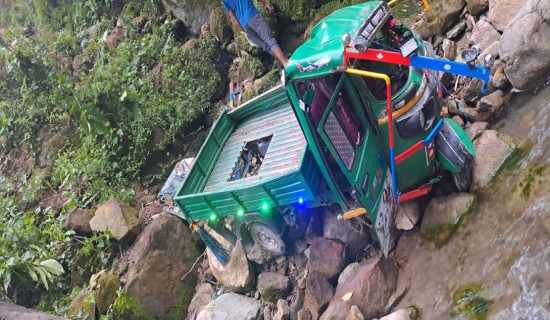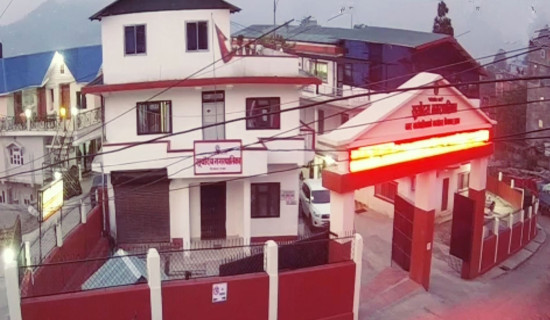- Wednesday, 27 August 2025
Nepal's Experience With Federalism
Ravi Nayak
In general, federalism is a doctrine that structures the nation and decentralises the power between central and provincial government through a constitution that brings unity in diversity by toning the divergent forces of centripetal and centrifugal trends in the nation to achieve the conjoint national target. Indeed, the idea of federalism draws on collaboration, reciprocity, and mutuality. However, federalism is a method of segregating powers between the central and local governments which are in a domain, harmonising and autonomous.
Multi Ethnic Nation
Nepal, a landlocked, multi-ethnic, and multi-cultural country, from its inception, had for long exercised a unitary system of governance but that changed after the people's uprising in 2006/2007.
Nepal is divided into three regions: the mountain, hill, and terai. Nepal has more than 101 cast/ethnic groups. Of these 101 groups, none of the groups has a majority and only 18 groups have an even population of more than one per cent. Similarly, Nepal has a group of people with 93 Mother Tongues, among them only 12 languages are spoken by more than one per cent. Even the population and land distribution among the ecological region are not uniform in Nepal.
The diversity in Nepal poses a challenge for the government to save and protect the identity of every group within the nation, as it's very complex in the unitary system to protect. A rising voice from every group for their identical provinces emerges in the debate over federalism in Nepal.
Thereafter, after the 10 years of armed conflict and 19 days of people’s movement when Nepal entered the phase of making a new constitution, the debate took its peak for having a constitution that not only established Nepal as democratic but federal as well. Thus, the new Constitution of Nepal, 2015 established Nepal as the Federal Democratic Republic of Nepal with three-tier governments, and are local, provincial and federal governments.
Prefectorial Federalism
Nepal has the prefectorial federal system, where the federal (central) government has overriding enormous powers over the provinces (states) or local governments. The centre commands and controls them and also constrains their autonomy. In this sense, Nepali federalism may be determined as a prefectorial federal system. Under the Nepali federal system, the federal (central) is indestructible and the provinces (state) are destructible.
The federal shape and structure and even the territorial boundary of the state/province can be altered by the federal government. However, even the parliament is not bound to accept or act upon the view of the state legislature. Also, the structure of the provincial governor's office is structured in such a way through the federal government can control and command the province government.
It seems that the government act as the nominee of the federal government and even the governor uses to reserve the province bill for the consideration of the president. In practice, it seems that the defeated and active politicians who belong to the central ruling party have been appointed as the governor who acts as an agent of the central government.
Similarly, Nepal has legislative supremacy within the federal parliament, and even the parliament has residual powers to legislation. As the federal parliament has legislative supremacy, there is a possibility for the interruption of the province legislation jurisdiction in the name of the national interest of the parliament.
Even if the province's legislation legislates the law concerning the matters enumerated in the Concurrent List and on the same matter if the parliament legislates the law then the parliament law will prevail over the province's legislation. There is a provision where the province must exercise its executive powers in compliance with the laws made by Parliament and even the central government can give direction to a province for this purpose.
However such provision is not found in nations like America, Australia, Canada, or swiss federal systems. Such provision in the federal system is against the feature of the federal and such provision establishes the control of the federal government over the province government.
The Constitution empowered the central government to intervene in the affairs of the province under the condition of external aggression, internal disturbance, and the condition when a province's government cannot be carried following the provisions of the Constitution. Even in the condition of a national emergency, the federal system turns into a unitary system.
During the emergency, the union/federal parliament has the authority to promulgate the law for the whole or any part of the territory concerning the matters enumerated in the province list. Even the federal government has unrestricted borrowing power but the same power has limitations on the province's government. Such provisions restrict the provincial government to raise loans outside the country with the consent of the central government even if there is a deficit.
Thus, the theory and practice of federalism substantiate the thesis that the central government is functional under prefectorial federalism which commands and overrides the power of the provinces in the federal system. Indeed, even the survival of the elected government of the province relies on the central government.
The legislative supremacy of the parliament, the constitutional provision for the supersession of provincial governments and centrally appointed state governors are weakening federalism. However, it is very explicit that the overcentralized federal system is inefficient to deals with the socio-economic challenges and strengthening national unity. Hence, it is appropriate to restructure the federal structure of Nepal to make an efficient federal structure and promote centre-state partnership.
In Nepal, the constitution grants limited power to provinces. Even the local levels were created to compete with the provinces and even during the constitutional writing process, the attempt was made to make the local level more powerful than the provinces. Instead of keeping the local level within the jurisdiction of provinces, it has granted separated constitutional authority and power, which made the provinces hard to look over their work and monitor. This structure of providing the local level more autonomy makes the provinces weaken.
Even the central government curtails many authorities and the power of the provinces which should be granted in a federal structure. In practice, the central parliament use to issue a law that even falls under the province's list, such as an ordinance issued on Nepal police and provincial work in 2020 at the federal level.
Though the provision of the constitution states explicitly that the provinces have authority over the police but the act has been promulgated by the federal law which enables the federal government to determine the police chief of the provinces, police officials, and their dress. Similarly, the chief district officer, who is the administrative chief of the district of the federal government is also appointed by the federal government.
The chief district officer has the federally delegated authority over the police and other things of the provinces to watch and monitor. If the monitoring power to the police provides to the chief district officer then what will be the role of a province’s internal affairs minister is. Along with this, the district court should be brought to the provincial government, which is not within the authority of the federal government.
The province list within schedule 6 is very low, which should be granted with more list and power. The provincial government should have been empowered with the authority to regulate the state police and the chief of the administration, which are now within the federal government's power.
Devolution of Power
The federal system in Nepal is established through a revolution and after a long political battle. The systeml is not only a constitutional method rather a symbol of revolt as well. During the constitutional writing process, many were against the federal system of governance.
The federal system of Nepal has brought constitutional as well as tremendous political changes, ensuring the minority right for protecting their identity. The main reason behind the adoption of the federal system in Nepal is the linguistics and cultural reason along with the decentralisation of power and development.
Through federalism, the identity of the minority is protected and development work has also been rampantly increased. The real essence of federalism still exists in Nepal.
Nepal's constitution has a federal feature like the written constitution, the supremacy of the constitution, and a strong and independent judiciary. However, some provisions should be amended for the federal feature.The local government should be included in the provincial government; the police and chief district officers should come under the provincial government; the district court should be included within the provincial government.
In the upcoming election of the province and federal, the political party should include in their manifesto for strengthing the federal structure of Nepal and need to work towards a more democratic form of federalism rather than bureaucratic and central.
(The author pursues 5th Year B.A. and L.L.B (Hons.) at National Law School of India University, Bengaluru)





-square-thumb.jpg)
-original-thumb.jpg)










